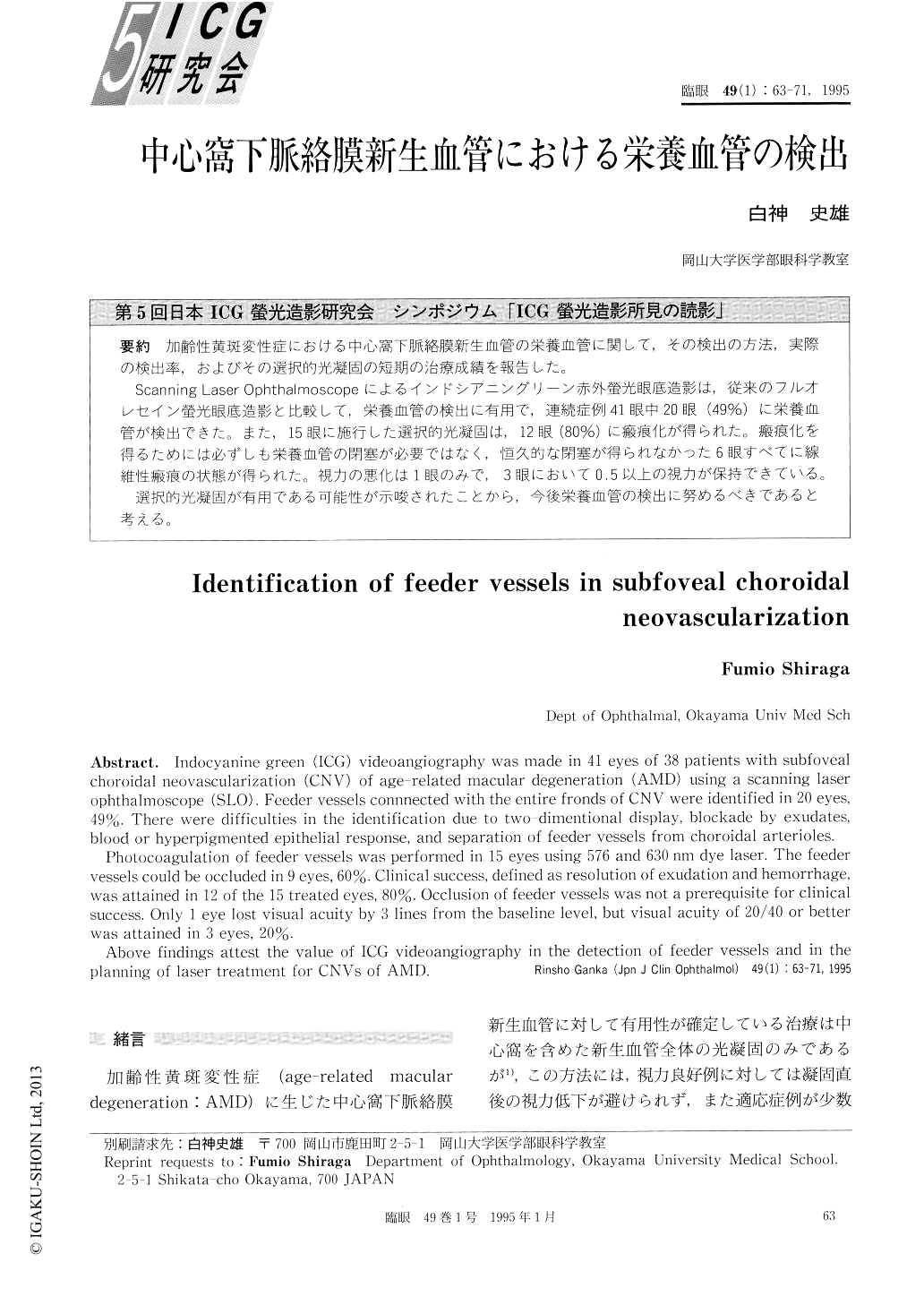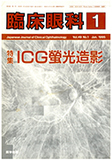Japanese
English
- 有料閲覧
- Abstract 文献概要
- 1ページ目 Look Inside
加齢性黄斑変性症における中心窩下脈絡膜新生血管の栄養血管に関して,その検出の方法,実際の検出率,およびその選択的光凝固の短期の治療成績を報告した。
Scanning Laser Ophthalmoscopeによるインドシアニングリーン赤外螢光眼底造影は,従来のフルオレセイン螢光眼底造影と比較して,栄養血管の検出に有用で,連続症例41眼中20眼(49%)に栄養血管が検出できた。また,15眼に施行した選択的光凝固は,12眼(80%)に瘢痕化が得られた。瘢痕化を得るためには必ずしも栄養血管の閉塞が必要ではなく,恒久的な閉塞が得られなかった6眼すべてに線維性瘢痕の状態が得られた。視力の悪化は1眼のみで,3眼において0.5以上の視力が保持できている。
選択的光凝固が有用である可能性が示唆されたことから,今後栄養血管の検出に努めるべきであると考える。
Indocyanine green (ICG) videoangiography was made in 41 eyes of 38 patients with subfoveal choroidal neovascularization (CNV) of age-related macular degeneration (AMD) using a scanning laser ophthalmoscope (SLO). Feeder vessels connnected with the entire fronds of CNV were identified in 20 eyes, 49%. There were difficulties in the identification due to two-dimentional display, blockade by exudates, blood or hyperpigmented epithelial response, and separation of feeder vessels from choroidal arterioles.
Photocoagulation of feeder vessels was performed in 15 eyes using 576 and 630 nm dye laser. The feeder vessels could be occluded in 9 eyes, 60%. Clinical success, defined as resolution of exudation and hemorrhage, was attained in 12 of the 15 treated eyes, 80%. Occlusion of feeder vessels was not a prerequisite for clinical success. Only 1 eye lost visual acuity by 3 lines from the baseline level, but visual acuity of 20/40 or better was attained in 3 eyes, 20%.
Above findings attest the value of ICG videoangiography in the detection of feeder vessels and in the planning of laser treatment for CNVs of AMD.

Copyright © 1995, Igaku-Shoin Ltd. All rights reserved.


